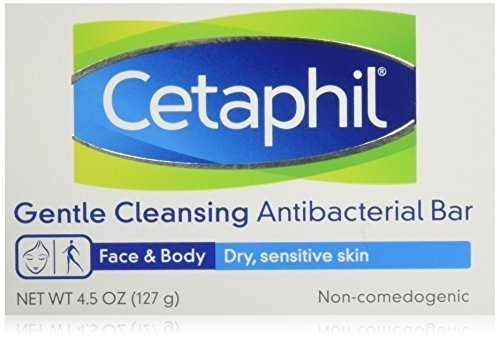What is chlorine allergy?
A rash that develops form exposure to chlorine or chlorinated water is a form of dermatitis, but in some cases chlorine exposure can lead to an allergic reaction. An allergic reaction to chlorine occurs when your immune system produces histamine (a protein that causes inflammation) as a result of contact with or ingestion of the chemical.
Chlorine is abundant in water, bleaches, and salts and is not a common allergen. If you are allergic to chlorine you will frequently display symptoms that affect the following body parts:
- skin
- sinuses
- lungs
Chlorine may indirectly contribute to allergies by irritating and sensitizing the respiratory tract. Studies have suggested that frequent swimming in chlorinated pools and exposure to cleaning products containing chlorine may increase the risk of developing asthma and other respiratory allergies, both in adolescents and in adults.
According to allergists, people do not have a “chlorine allergy” but rather a reaction to chlorine. Chlorine reacts with your skin cells, leaving a layer of chlorine on the surface of your skin.
Chlorine reactions may include itchy, red skin or hives (itchy bumps). This is not an allergy but is actually “irritant dermatitis” (like a chemical burn), caused by hypersensitivity to this natural irritant. Chlorine is also drying to the skin and can irritate existing dermatitis.
Chlorine allergy is a type four allergy. This is a term that means that the manifestations of the symptoms are delayed as the reactions are cell-mediated. Thus, most patients are actually unaware of their allergy to chlorine, unless they are exposed to the said chemical. However, it is easy to tell when one is allergic to chlorine by observing the different symptoms.
If you have a moderate or severe allergic reaction to chlorine, you need to be diligent in avoiding exposure to the chemical and should keep a method of treatment on hand in case of accidental contact. Using a water purification system that involves compounds similar to chlorine in the home can help to deter allergic reactions.
Can you get a rash from chlorine?
From swimming pool
Chlorine is typically known as a skin irritant. A chlorine rash can occur following an exposure to the chemical. It is often associated with exposure to chlorinated water like in swimming pools or hot tubs. Preventing the rash includes avoiding or minimizing exposure to chlorine.
Swimming pool and hot tub water is usually infused with chlorine to retard bacterial growth. At the right limits chlorinated water will not cause a reaction, but excessive amounts or prolonged exposure to the irritant can lead to a rash. Direct exposure to concentrated chlorines can also lead to a rash.
It does not take much time for the onset of signs and symptoms of these skin rashes after exposure to the said chemical. The beginning of chlorine rash is troublesome itching.
Chlorine rash symptoms
There are quite a number of things that give you a signal that the condition you are a facing is a rash from chlorine. They go hand in hand with the duration and the quantity of chlorine that you are exposed to. They include:
- Irritation of the eyes
- Dry skin
- Constant coughing
- Sneezing
- Respiratory failures
- Nausea
- The irritation of the eyes does not take place when swim I a pool and because you are allergic to chlorine. It may also be a result of the use of household products and cleaners that release chlorine fumes. Itchiness, redness or watering of the eyes that result from contact with chlorine is an indicator of chlorine allergy.
- Regarding the dryness of the skin, it might not necessarily be a symptom of chlorine allergy. It presents with white patches that may come from yeast infection as well. In the case where you get tightening of the skin with itching and peeling after wearing fabrics treated with chlorine or swimming, then there is a likelihood of an allergy to chlorine.
- Constant coughing takes place when you smell or touch chlorine yet you have an allergy to it. However, you should be aware that constant coughing might not necessarily imply allergy to chlorine but some time it could be a sign of sensitivity to the chemical.
- Sneezing, which is likely to occur is the most common symptom that comes up as a result of the inhalation of the fumes. It could come after staying too long around pools or using household chemicals too often.
- Respiratory failures are likely because chlorine can affect your respiratory system. Therefore, the symptoms you are likely to go through are similar to those ones of asthma, which include wheezing, coughing, difficulty in breathing, tightening of the chest and suffocation in some cases.
- Nausea and vomiting is quite often. Many people claim to go through dizziness and then vomiting when exposed to high amounts of chlorine. In other cases once you are allergic to chlorine, you might encounter delusions.
SEE ALSO:
- What does a mottled skin mean?
- Rash on stomach causes and treatment
- Why does skin peel off the fingers?
Treatments for chlorine rash
It is good to know that chlorine is basically an irritant. Thus, the first thing to do after the symptoms have been observed is to wash it off and apply a soothing cream prescribed by the physician. The following steps can also help in curing or providing relief to the symptoms of chlorine allergy:
- Do not use clothes that were washed in detergents which have high amounts of chlorine.
- See a doctor immediately after the symptoms have been observed.
- Shower immediately after swimming.
- Swim in pools containing salt water instead of chlorine.
Treatment for a chlorine allergy can vary depending on the severity of a person’s symptoms and the degree of exposure. Medical professionals can prescribe one or a combination of these treatment methods and options available at the market:
Antihistamines – these medications treat both skin and breathing complications. They are sold in tablet, liquid, or spray form, some of these medications can be purchased over-the-counter while others require a prescription.
Also, bronchodilators can be administered through an inhaler – Individuals who develop asthmatic symptoms as a result of a chlorine allergy can treat symptoms by using an inhaler containing either short-acting or long-acting bronchodilators [such as Albuterol or Symbicort].
Similarly the use of skin creams could also save the situation- Antihistamine skin creams and gels such as Benadryl can help treat symptoms once they are applied as prescribed.
- Skin sensitivity is typically treated by washing the affected area with clean water to try to remove any traces of the remaining irritant, i.e., cleaning product or swimming pool water.
- In some cases a corticosteroid cream may be prescribed, but care must be taken to follow the instructions and not overuse it.
- Hives can be treated with an antihistamine, such as diphenhydramine.
- The use of corticosteroids is recommended to be used as a cream and they can really help not only with the itchiness but also with the inflammation.
The other option is to use anti-itchiness ointments: these can contain a wide range of substances but the most recommended ones are the ones that contain menthol or camphor, as these can really calm the skin and bring to you the much needed relief
Another very key substance of use is the anti-bacterial soap – as mentioned above, after chlorine exposure, the skin is dry and depleted of its natural oils. When the skin is dry, it also presents a high risk for developing bacterial infections. This is why it is recommended to use anti-bacterial soap and take really good care of your skin
In case of ocular irritation, that is the irritation in the eyes, there are special eye drops that can help with all the symptoms:
- itchiness
- redness
- swelling
The situation in this case should be handled with speed to avoid incurring further damaging eye effects and irritations.
In case you have breathed in chlorine out of accident or because of prolonged exposure, no treatment will be necessary. However, it might be a good idea to step out of the room in which you have breathed and out into fresh air to get rid of the chlorine.
At other times, anti-inflammatory medication can be recommended in case there is swelling associated with the rash
Home remedies for chlorine rash and allergy
At home, you are still in a good position to handle the allergy to chlorine when it comes. With the right knowledge and technique, you can actually counter the allergy before presents more serious and more life threatening conditions. The below home remedies can give you an idea of how to go about the situation:
Ice Cubes
Ice cubes should be your first thing to rush for. They also g a great mile to bring about an amount of relief to the swelling and inflammation that can take place to some extent in a condition of such a magnitude.
For the smaller areas or those that do not cover large areas of the body, you g for Ziploc bags that are filled with ice and wrapped in a washcloth or towel in order to have your body secured and salvaged from damage.
Apart from that, a baking soda may also save your allergic rashes. A baking soda and a 25 minutes soak can give wonderful results. It can also help with the reduction of inflammation. To do this, simply:
- Add ½ cup of baking soda to a full bathtub to at the temperature of your own preference
- Mix the baking soda with water allowing it to completely dissolve before getting in
- Relax in the bath tub for about half an hour then drain the tub
- Rinse yourself
Sugar and almond oil or sugar with olive oil
The other alternative could be the use of sugar and almond oil or sugar with olive oil. Both of these concoctions can be left to interact with the skin for a few minutes before being rid of from the skin by a shower. Most of the scrub based recipes use ½ cup of white sugar mixed with any essential oil. Be careful to use ingredients that do not further irritate the skin.
Alternatively, the following could be used as home remedies as well:
- Aloe vera gel or fresh crushed aloe vera is a topical treatment that can help soothe the itchiness. It can be applied directly on the skin.
- Sitz bath or a starch bath, soaking in water with corn starch mixed in is a good way to help soothe the itching. This can be done in a bathtub for generalized itching or with a basin if only a small part of the body has a rash.
- Warm and cold compresses, as these can help to relieve the itching and can relieve the swelling.
- Vaseline this is recommended to be applied before going into the swimming pool, as it will help to prevent chlorine from affecting your skin
- Fresh Aloe Vera applied to the skin can help with the symptoms of chlorine rash as well
- Vinegar applied to the skin area where the rash has developed is very helpful.
The key measure to deal with chlorine is to prevent its effects. The following tips give you a yardstick on how to avoid the damaging effects:
- Bathe right after exposure to water that has high concentrations of chlorine.
- Keep chlorine levels of the water in swimming pools at an acceptable level.
- Limit exposure to public pools and tubs with levels of chlorine.
- Discontinuing use of household products that contain chlorine – Products such as non-chlorine bleach are available for individuals with a chlorine allergy. These products are commonly offered through environmentally-friendly companies.
References and Sources
- http://mddk.com/chlorine-rash.html
- http://doctordecides.com/chlorine-rash/
- http://www.skincarearticles.com/i-have-a-chlorine-rash-what-remedies-can-i-use/
- http://acaai.org/allergies/types/allergy-myths/chlorine-allergy
- http://www.simple-remedies.com/home-remedies/body-and-skin-rashes/rash-from-chlorine.html
- http://www.healthguideinfo.com/skin-allergies/p95810/
- https://www.swimspray.com/blogs/chlorine-hair-and-skin/7228732-chlorine-allergy-vitamin-c-treatment
- http://acaai.org/allergies/types/allergy-myths/chlorine-allergy


